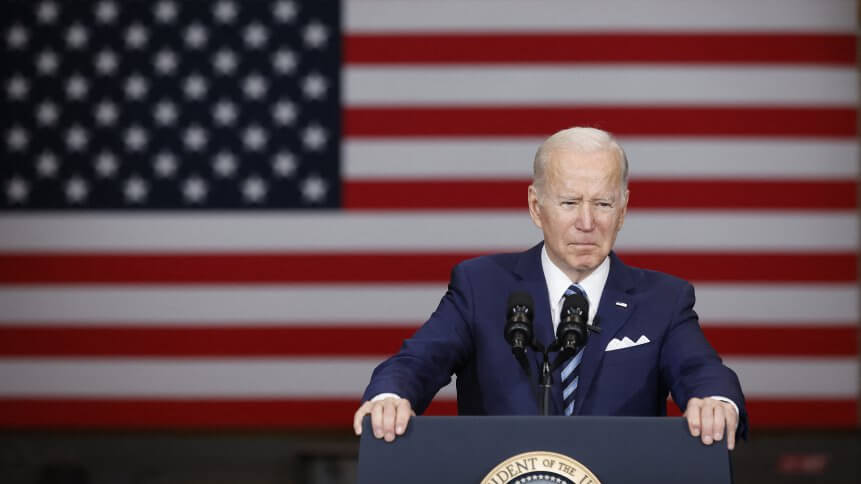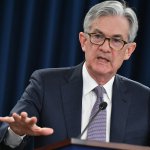Is the US about to regulate, even issue it’s own cryptocurrency?

- The order signed by President Joe Biden is basically directing the US federal government to come up with a plan to regulate the cryptocurrency space
- The order will coordinate efforts among financial regulators to understand the risks and opportunities presented by digital assets, particularly in the areas of consumer protection, national security, and illicit finance
Two weeks ago, US President Joe Biden signed an executive order instructing his government to assess the risks and benefits of creating a central bank digital dollar. The order was also a first-of-its-kind for a cryptocurrency, as it directs federal agencies to coordinate their approach to the crypto sector.
The approach to regulate the crypto industry, according to a fact sheet that accompanies the order, focuses on consumer protection, financial stability, illicit uses, leadership in the global financial sector, financial inclusion and responsible innovation. The executive order, the first such to focus exclusively on the growing digital asset sector, also directs federal agencies to better communicate their work in the space.
It, however, does not lay out specific positions the administration wants agencies to adopt — nor were there any new regulations by which crypto companies are required to abide. Despite the risks, the government said, surveys show that roughly 16% of adult Americans — or 40 million people — have invested in cryptocurrencies. And 43% of men aged 18-to-29 have put their money into crypto.
The executive order, which was originally reported to be in the works last year, defines six “key priorities” for the administration: protecting US interests, protecting global financial stability, preventing illicit uses, promoting “responsible innovation,” financial inclusion and US leadership, according to a fact sheet.
Cryptocurrency in the US — the future of money
The order also directs the US Treasury Department to draft a report on “the future of money and payment systems”. The interagency report will analyze the impact of cryptocurrency and “the extent to which technological innovation may influence that future.”
The report should also answer the earlier question of how the current financial system does or does not meet consumer needs. In a statement that was later removed, Treasury Secretary Janet Yellen said the report will complement the Treasury Department’s existing efforts to analyze the crypto sector.
“Already, the Department has worked with the President’s Working Group on Financial Markets, the Federal Deposit Insurance Corporation, and the Office of the Comptroller of the Currency to study one particular kind of digital asset – stablecoins – and to make recommendations,” Yellen said.
“Under the executive order, Treasury and interagency partners will build upon the recently published National Risk Assessments, which identify key illicit financing risks associated with digital assets.”
Then there were also the President’s Working Group (PWG) report, published in November, that had called on Congress to pass a law more clearly defining federal bank regulators’ oversight authority over stablecoins, but said the Financial Stability Oversight Council (FSOC) could take action in lieu of legislation.
While cryptocurrencies have not been widely adopted as a means of payment in the US, stablecoins are a more recent incarnation of crypto that peg their value to one or more assets, such as a sovereign currency or commodity.
In particular, stablecoins pegged to the US dollar are predominantly used today to facilitate trading of other digital assets, “but many firms are exploring ways to promote stablecoins as a widespread means of payment,” the US government said in a report in January this year.
The report also emphasized that well-designed and appropriately regulated stablecoins could potentially support faster, more efficient, and more inclusive payment. However, the potential for the increased use of stablecoins as a means of payment raises a range of concerns related to the potential for destabilizing runs, disruptions in the payment system, and concentration of economic power.
“To address the risks of payment stablecoins, a PWG’s recommends that Congress act promptly to enact legislation that would ensure payment stablecoins and payment stablecoin arrangements are subject to a consistent and comprehensive federal regulatory framework. Such legislation would complement existing authorities regarding market integrity, investor protection, and illicit finance,” the report stated.
To date, crypto has been described as the “Wild West” by SEC chair Gary Gensler, due to a lack of comprehensive regulation in the industry. To be fair, the lack of laws and policies over this burgeoning area has created an opening for widespread fraud, scams, and even market manipulation.
Over the last two years alone, crime linked with cryptocurrency has ballooned tremendously. In 2021 alone, scammers took US$14 billion worth of crypto, a record compared to the US$7.8 billion taken by scammers in 2020, according to a report by blockchain data firm Chainalysis.
To top it off, there were more than 17,000 alternative coins or altcoins, which are typically even more volatile and speculative than Bitcoin, and come with a higher risk of crypto scams and frauds.










